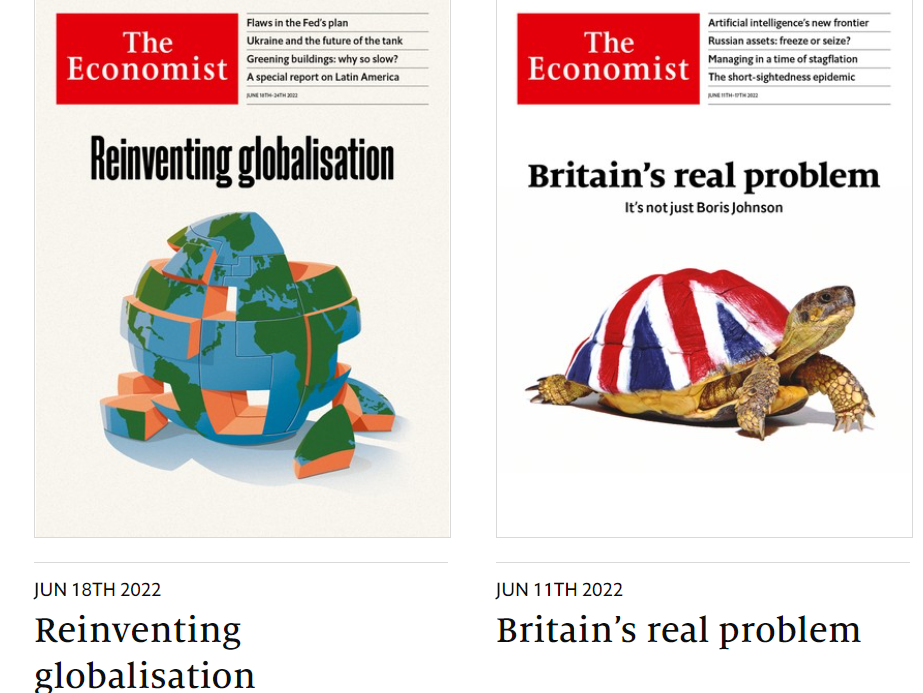
The Economist had its most successful year financially since 2016 last year with profit up and record revenue, thanks to increased subscriptions.
The magazine and digital publisher said subscriber numbers were “robust”, totalling 1,185,000 despite a “sluggish” start to the financial year in April 2021 which it put down to a “slow news cycle” following a busy period of the Covid-19 pandemic and US election.
This compares to 1,122,000 subscriptions at the end of March 2021 and 1,088,000 in 2020. The past figures have been restated as The Economist now includes the Espresso app, Global Business Review app and group subscriptions within its subscriber counts.
In its annual report, published on Tuesday, parent company The Economist Newspaper Ltd said its adjusted operating profit for the year was up 11% to £46.4m, its best since £47m in 2016.
Meanwhile revenue was at its best level ever after 12% growth to £346.3m (both these profit and revenue figures refer to continuing operations only).
Pre-tax profit more than doubled from £19.8m in 2021 to £43.6m.
The group is made up of four customer-facing divisions:
- The Economist magazine
- Executive course provider Economist Education (revenue combined with The Economist magazine of £194.3m)
- Client solutions brand Economist Impact (£106.5m revenue)
- Research and analysis division Economist Intelligence (£45.5m revenue).
Some 55% of group revenue is now digital, increasing to more than 60% when including digital consumption from print and digital bundled subscriptions.
Just over half (52%) of subscribers are now digital-only, compared to 44% in 2021 and 35% in 2020, while 66% of new subscribers during the year chose digital offerings. The group said digital subscriptions have better retention, lower costs and help it work towards its goal of reducing carbon emissions by 25% by 2025.
The report also claimed more people were choosing annual subscriptions rather than monthly ones, and that subscribers were becoming more diverse, with an increase in representation from women and under-50s. It also said group subscriptions for businesses and universities had doubled.
Total subscription revenue grew by 1% to £211.7m, making up 61% of total group revenues. Advertising, research and other revenues were £134.6m, up a third from £100.8m.
Editor-in-chief Zanny Minton Beddoes said: "Russia’s invasion of Ukraine, inflation at its highest rate for a generation and the growing prospect of a recession are just three reasons why the stakes for The Economist’s journalism could not be higher.
"We have grown our digital ecosystem and increased our cadence to bring timely, mind-stretching analysis to subscribers, helping them to make sense of the world at the times and in the formats they want."
Chief executive Lara Boro pledged to continue investing in digital products "and in the teams that create and deliver them". The Economist website saw 16.3m unique visitors in March, up four million from a year before.
Despite this the report said there was still an "overall enthusiasm" for print with a two-year high in newsstand sales in the first weeks of the Ukraine war, although this was still lower than pre-Covid levels in 2019. According to ABC, The Economist's print product had average sales of 648,543 in July to December 2021 compared to 909,476 in the second half of 2019.
Podcast plays were up 15% to 301 million in the year. Economist podcasts reached five million people in April 2022, with the report saying: "We intend to build on this success, both with editorial investment and a new business strategy." Director of podcasts John Prideaux recently told Press Gazette an audio paywall was under consideration.
In the coming year the group said it expects strong growth in the group subscriptions and education businesses and that it will continue to concentrate on consumer subscription growth, especially in Asia where several markets offer "promising headroom".
It also teased a "new premium digital offering that, along with Espresso
and the core newspaper, will ensure we have Economist products
in a range of formats and price points". Espresso is an app, first launched in 2015 and relaunched in March this year, that offers a daily briefing from The Economist at a lower price point for "those who are more time- and price-sensitive—and to people who are new to the brand and just want to get to know us a little better".
Away from the publishing division, event revenues doubled year-on-year following digital innovation during the pandemic, while Economist Impact recovered from Covid with improved advertising revenues and "significant revenue growth from large, integrated customer accounts". Economist Impact topped £100m in revenue for the first time.
Press Gazette is hosting the Future of Media Technology Conference. For more information, visit NSMG.live
Email pged@pressgazette.co.uk to point out mistakes, provide story tips or send in a letter for publication on our "Letters Page" blog
